Crow Garlic / Spring / Winter / Edible
Common Names
Wild garlic, onion grass, crow garlic or stag’s garlic, compact onion, false garlic, wild onion
Botanical Name
Allium vineale
Scientific Classification
Kingdom – Plantae
Order –Allium
Family – Amaryllidaceae
Physical Characteristics for Crow Garlic
A perennial, bulb-forming species of wild onion. All parts of the plant have a strong garlic odour.
Leaves
The leaves are slender hollow tubes, 15–60 cm long and 2–4 mm thick, waxy texture, with a groove along the side of the leaf facing the stem.
Flowers
The inflorescence is a tight umbel surrounded by a membranous bract in bud which withers when the flowers open. Each individual flower is stalked and has a pinkish-green perianth 2.5 to 4.5 mm (0.10 to 0.18 in) long. There are six tepals, six stamens and a pistil formed from three fused carpels. Mixed with the flowers are several of yellowish-brown bulbils.
Fruit
The fruit is a capsule but the seeds seldom set and propagation usually takes place when the bulbils are knocked off and grow into new plants. Plants with no flowers, only bulbils, are sometimes distinguished as the variety Allium vineale var. compactum, but this character is probably not taxonomically significant.
Bulb
The underground bulb is 1–2 cm diameter, with a fibrous outer layer.
Stamens usually one fruit
Habitat
Native to Europe, Northwestern Africa and the Middle East. The species was introduced in Australia and North America, where it has become a noxious weed. Fields and roadsides to elevations of 450 metres in Britain, often a serious weed of pastures
Known Hazards
There are no known hazards, however there is not enough reliable evidence this plant is safe to take orally during pregnancy.
Could be Confused with
Often confused with wild grasses when not in flower, but rubbing the leaves gives the distinctive garlic smell. A dangerous lookalike is Star of Bethlehem (Ornithogalum umbellatum). This is poisonous to humans and animals so please make sure you properly identify your Crow Garlic before consuming it.
Edible Uses
While Allium vineale has been suggested as a substitute for garlic, there is some difference of opinion as to whether there is an unpleasant aftertaste compared to that of Common Garlic (A. sativum). It imparts a garlic-like flavour and odour on dairy and beef products when grazed by livestock. It is considered a pestilential invasive weed, as grain products may become tainted with a garlic odour or flavour in the presence of aerial bulblets at the time of harvest. Crow Garlic is resistant to herbicides, which cannot cling well to the vertical, smooth and waxy structure of its leaves.
The leaves are available from late autumn until the following summer, when used sparingly they make a nice addition to the salad bowl.
Bulb – used as a flavouring. Rather small, with a very strong flavour and odour. The bulbs are 10 – 20mm in diameter.
Bulbils – raw or cooked. Rather small and fiddly, they have a strong garlic-like flavour.
Notes on Herbal Uses
The whole plant is anti-asthmatic, blood purifier, carminative, cathartic, diuretic, expectorant, hypotensive, stimulant and vasodilator. A tincture is used to prevent worms and colic in children, and also as a remedy for croup. The raw root can be eaten to reduce blood pressure and also to ease shortness of breath. Although no other specific mention of medicinal uses has been seen for this species, members of this genus are in general very healthy additions to the diet. They contain sulphur compounds (which give them their onion flavour) and when added to the diet on a regular basis they help reduce blood cholesterol levels, act as a tonic to the digestive system and also tonify the circulatory system.



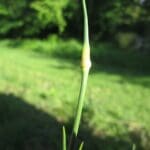
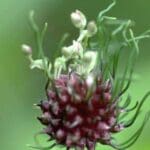
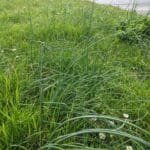
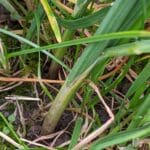
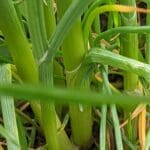
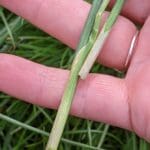
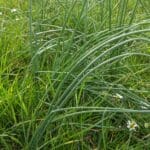
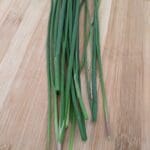
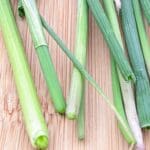
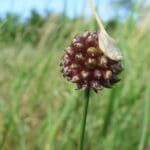
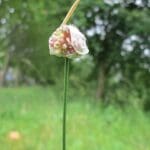



2 replies on “Crows Garlic (Allium vineale) Identification”